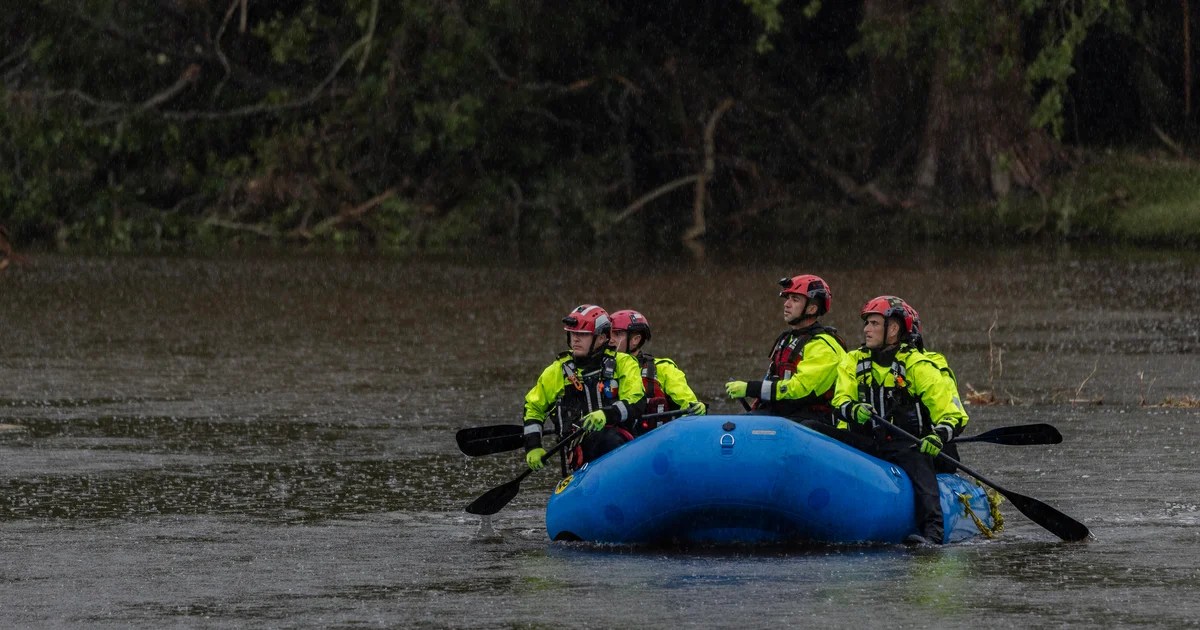
Former Chicago Cop Pleads Guilty to Aggravated Battery of Two Female Colleagues
June 11, 2025
Trump Doubles Down on Federal Troop Deployments to Los Angeles
June 12, 2025
In 1936, Franklin D. Roosevelt won reelection in Coke County, Texas, with 92 percent of the vote. The margins were similarly stunning in rural counties across Texas: Oldham, Sterling, Glasscock, Roberts, and on and on. The Democratic Party earned the numbers it put on the scoreboard that year. Rural Texas was swept up in a surge of federal relief and public works projects. Amid the unemployment of the Great Depression, the New Deal put people to work fixing roads, enhancing soil, and repairing schools — work that paid desperately needed wages and left lasting improvements. Plans were shaping up for rural electrification, an initiative that would be led by rural Texan hometown hero Lyndon B. Johnson and would light up the countryside.
Today Coke County, Texas, has no Democratic Party chair. Neither do Oldham, Sterling, Glasscock, Roberts, or seventy other counties in Texas. All told, over a quarter of Texas counties have Democratic Party vacancies. That figure has doubled in the last decade.
Nationwide the number of county Democratic Party vacancies is 20 percent, according to a new paper by Clinton Willbanks and Michael E. Shepherd, titled “Texas in the Rear-View Mirror? How the Democratic Party Ignores Rural America and Underperforms in Elections.” Since 2016, their study finds, the Democratic Party has operationally withdrawn from rural America, leaving vast swaths of the country without organized opposition to Republican candidates.
The Democratic Party’s organizational abandonment of rural counties is a dramatic recent trend. Before 2016, fewer than 10 percent of rural Texas counties lacked Democratic Party chairs, barely higher than in urban areas. But following Donald Trump’s initial presidential victory, Democrats let their rural organizing infrastructure collapse. By contrast, Republicans maintain chairs in every single county in Texas and do not have a corresponding vacancy problem in cities.
Across the United States, only 4 percent of rural counties lack Republican chairs. In other words, Democratic vacancies in rural counties are six times higher than Republican vacancies — and growing. Democrats, intimidated by the red tide washing over rural America and stumped on how to appeal to rural voters, are simply throwing in the towel.
The Democrats went into the 2016 election with confidence that they “could largely write off the rural vote,” as rural voters’ “exodus was offset by demographic growth among urban and non white voters,” according to Politico. Senate Democratic Caucus leader Chuck Schumer famously said in 2016 that for every blue-collar worker the Democrats lost in deindustrialized Western Pennsylvania, they could pick up two affluent suburbanites outside Philadelphia.
That year’s election result, in which Donald Trump beat Hillary Clinton in a narrow race with the decisive backing of rural voters, should have throttled strategists into a new way of thinking. Instead it appears the party took a sour-grapes approach to the rural electorate. According to Willbanks and Shepherd, the current trend in rural county vacancies really accelerated after the 2016 election. A “Who needs ‘em anyway?” ethos seems to be guiding the party’s attitude toward rural America — even in the face of overwhelming evidence that Democrats really do need them.
The party’s retreat from rural America extends beyond party representation to candidate recruitment. Nationally, Willbanks and Shepherd found, Democrats failed to field congressional candidates in 12 percent of rural counties, while Republicans contested every rural district. In Texas, the problem is even more severe: 63 percent of rural counties had uncontested state senate seats where Democrats simply didn’t run anyone.
“Large swaths of rural America now find themselves residing in areas without formal Democratic Party organizations and in which only Republican candidates compete for local offices,” the authors write. “Millions of rural voters now find themselves represented in state and national legislatures by Republicans who won election without facing organized opposition by Democrats.”
Stung by the rural resentment that burst onto the political scene in 2016 and has since only intensified, the Democrats have taken their ball to play elsewhere. But the game is still being played on this court, and despite rural voters being a relatively small portion of the electorate, they remain key players.
Democrats’ strategic retreat carries real electoral consequences. Willbanks and Shepherd’s analysis found that counties without Democratic chairs experienced up to 8 percentage-point drops in voter turnout, up to 10 percentage-point declines in campaign contact, and up to 8 percentage-point decreases in Democratic vote share for statewide races. Statewide races, of course, include races for federal representatives. By ditching rural voters, the Democrats are actively undermining their own legislative power on a national level.
The party’s attitude of defeat also underestimates its own potential. Erica Etelson and Anthony Flaccavento, cofounders of the Rural Urban Bridge Initiative, argued in the Nation that Democrats actually have a decent shot of performing well when they do run in red rural districts, provided they run relatable and attractive campaigns. Of fifty candidates they interviewed in 2022, “all significantly overperformed the partisan lean of their district or state.”
The highest performers were those candidates whose messaging focused on economic concerns alongside specific local issues — not standard national-level Democrat rhetoric with its emphasis on blue team versus red team dynamics. Given the systematic economic underdevelopment and exploitation of rural America and the profound strain on rural infrastructure, there are plenty of rural issues that lend themselves well to progressive economic messaging that steers clear of culture-war issues and national partisan mudslinging.
The New Deal garnered support in rural areas by combining tangible local improvements — immediate relief, good jobs, and improved infrastructure — with an inspiring vision of national renewal. Where the New Deal offered an expansive vision of American possibility, today’s Democratic messaging has contracted into a defensive posture centered almost entirely on opposing Donald Trump at the expense of an independent and inspiring policy agenda. This focus reinforces one of rural voters’ deepest grievances: that their local concerns are invisible to politicians consumed with the dramas of Washington and other distant power centers.
The Democrats are not necessarily doomed in rural America, but they’ll need to clarify what they stand for, not just what they’re against.
American politics structurally privileges rural constituencies through the Electoral College, the Senate’s equal state representation, and gerrymandered legislative districts. No political bloc can exercise meaningful power in this country without rural voters in its coalition. The math is unforgiving: even if Democrats maximize their urban and suburban performance, ceding rural America entirely makes winning national elections unnecessarily difficult and sometimes impossible.
Beyond immediate electoral calculations, there are also broader questions of political hegemony at stake. As Jared Abbott has written in Jacobin, “Even if rural voters weren’t an electorally important group for progressives to reach, however, abandoning rural America means that we undermine our longer-term strategic prospects by ceding large swaths of the country to far-right domination.” Discarding rural voters means putting up no resistance to the fusion of far-right politics with regional identity. If left unchecked, this fusion could take generations to tease apart again, placing severe limitations on a progressive movement that aims to transform society.
The Democrats and the broad left can’t afford to abandon rural America. What is needed is a year-round presence in rural communities, systematic development of local candidates who understand rural concerns, and policy agendas that address the economic realities facing small towns — from health care access to agricultural policy to broadband infrastructure. Most important, progressive politics needs to articulate a vision of shared prosperity that includes rural America rather than treating these communities as obstacles to progress.
By abandoning this work, Democrats have left a vacuum that weakens opposition to conservative power everywhere. The economic progressivism that once electrified the countryside, literally and figuratively, can make a political impact on rural America yet again. Whether it comes from a reformed Democratic Party, an insurgency of progressive independent candidates, or entirely new left-wing political formations remains to be seen.
Great Job Meagan Day & the Team @ Jacobin Source link for sharing this story.








